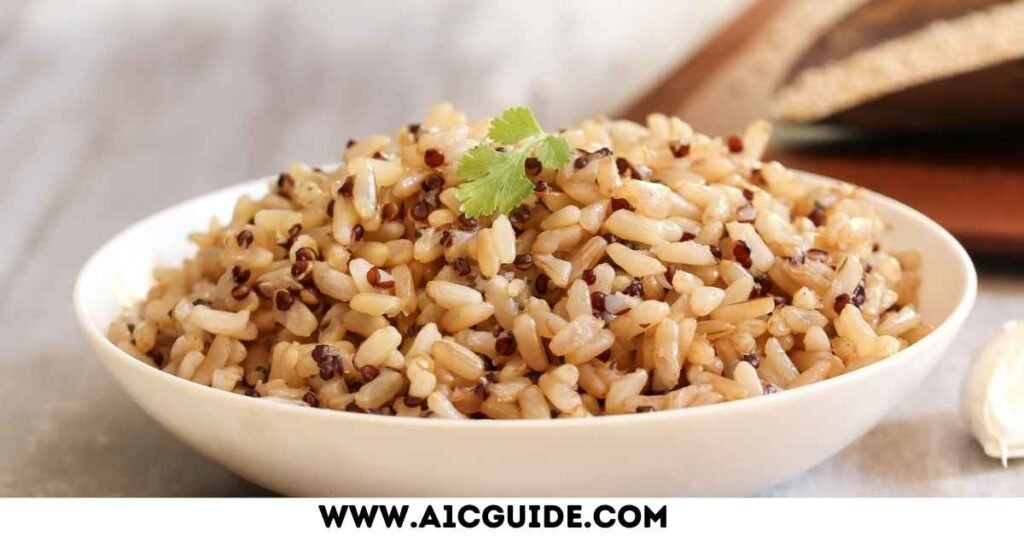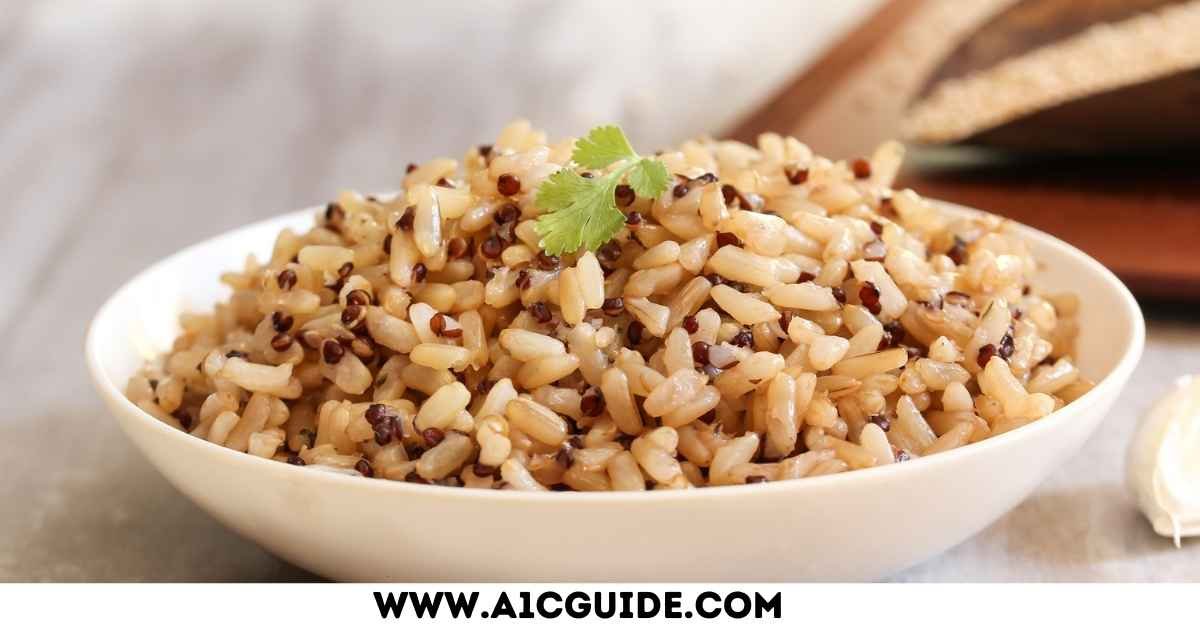Table of Contents
For individuals managing diabetes, making informed dietary choices is necessary for maintaining blood sugar levels and overall health.
Brown rice, known for its nutritional richness, often raises questions about its suitability for those with diabetes.
The possible benefits and considerations for people with diabetes when incorporating brown rice into their diet are mentioned in this article.
Understanding Brown Rice And Diabetes
Nutritional Profile of Brown Rice
- Whole grain goodness: Brown rice contains all parts of the grain – the bran, germ, and endosperm, resulting in a higher nutritional content than refined grains.
- Rich in fiber: Brown rice is an excellent dietary fiber source, including soluble and insoluble fibers. Fiber improves digestive health and helps regulate blood sugar levels.
Impact on Blood Sugar Levels
- Lower glycemic index: Brown rice generally has a lower glycemic index (GI) than white rice. Foods with a lower GI get digested slowly, and there is a gradual rise in blood sugar levels.
- Whole grains and diabetes: Whole grains, like brown rice, have been associated with improved insulin sensitivity and lower risk of type 2 diabetes.
Benefits Of Brown Rice For Diabetics
Fiber Content
- Digestive health: Brown rice’s high fiber content promotes regular bowel movements and prevents constipation.
- Blood sugar control: Fiber helps slow down glucose absorption, resulting in stable blood sugar levels.
Nutrient Density
- Essential nutrients: Brown rice is an excellent source of essential nutrients, including B vitamins, magnesium, and phosphorus, which play vital roles in overall health.
- Whole grain advantages: Choosing entire grains like brown rice ensures that individuals with diabetes receive a more comprehensive range of nutrients compared to refined grains.
Considerations For Diabetics
Portion Control
- Moderation is key: While brown rice can be a nutritious addition to a diabetic diet, portion control is crucial. Consuming appropriate serving sizes helps manage carbohydrate intake and blood sugar levels.
- Balanced meals: Pairing brown rice with protein, healthy fats, and a variety of vegetables creates balanced meals that have a lesser impact on blood sugar.
Carbohydrate Counting
- Monitoring carbs: Diabetics often use carbohydrate counting to manage blood sugar levels. Including brown rice in the overall carbohydrate count helps in accurate meal planning.
- Glycemic load awareness: While brown rice has a lower glycemic index, being aware of the glycemic load – which accounts for both the quality and quantity of carbohydrates – provides a more comprehensive understanding of its impact on blood sugar.
Individual Responses
- Personalized approach: Responses to foods can vary among individuals with diabetes. Regular blood sugar monitoring helps gauge how brown rice affects one’s body.
- Professional guidance: Consulting with healthcare professionals or a registered dietitian allows for personalized advice on including brown rice in a diabetic diet.
Incorporating Brown Rice Into The Diabetic Diet

Meal Planning Strategies
- Balanced plate: Create balanced meals by combining brown rice with lean proteins, such as fish or grilled chicken, and a generous serving of colorful vegetables.
- Whole-food variety: Include a variety of whole foods to ensure a diverse range of nutrients, supporting overall health and diabetes management.
Cooking Methods
- Opt for whole grains: Choose brown rice over white rice in various dishes, such as stir-fries, pilafs, or grain bowls, to maximize its nutritional benefits.
- Experiment with alternatives: Explore other whole grains like quinoa, barley, or bulgur for added variety and potential health benefits.
Recipe Modifications
- Control added sugars: When preparing dishes with brown rice, be mindful of added sugars in sauces or dressings. Opt for homemade or carefully selected condiments with minimal sugar content.
- Flavor with herbs and spices: Amplify the taste of brown rice dishes with herbs and spices instead of relying on high-sugar or high-sodium seasonings.
FAQs
- How much brown rice can a diabetic eat?
Although it is recommended for diabetes patients to include brown rice in their diet than white rice, it is always advisable to have brown rice in moderate proportions, as individuals react differently to different foods.
- What is better for a diabetic, brown or white rice?
White rice contains a lot of refined carbohydrates, while brown rice has a low glycemic index and high fiber content.
Hence, brown rice over white rice is always advisable for individuals with diabetes.
- Can diabetics eat brown rice every day?
Yes, people with diabetes can include moderate portions of brown rice in their daily meals, as brown rice is proven to reduce the aggravation of type 2 diabetes.
Conclusion
Incorporating brown rice into the diet of individuals with diabetes can be a nourishing choice, offering a range of health benefits. With its high fiber content, lower glycemic index, and nutrient density, brown rice aligns well with a balanced and nutritious diet.
However, individual responses vary, and maintaining portion control and monitoring blood sugar levels are essential aspects of diabetes management. By adopting a personalized and informed approach, individuals with diabetes can enjoy the nutritional advantages of brown rice while supporting their overall well-being.
Consulting with healthcare professionals provides valuable insights for crafting a diet that meets individual health needs.
